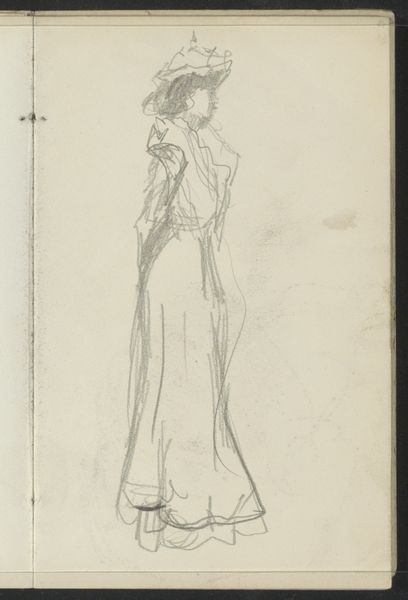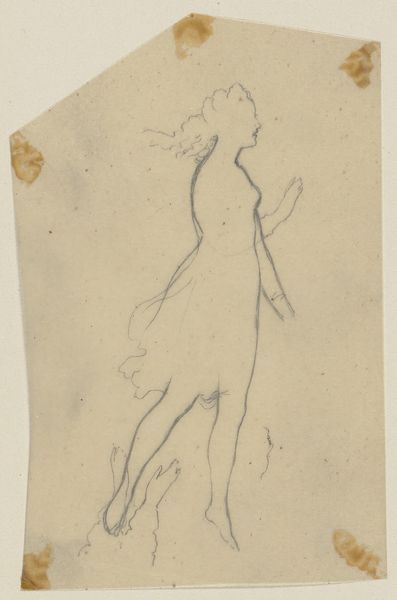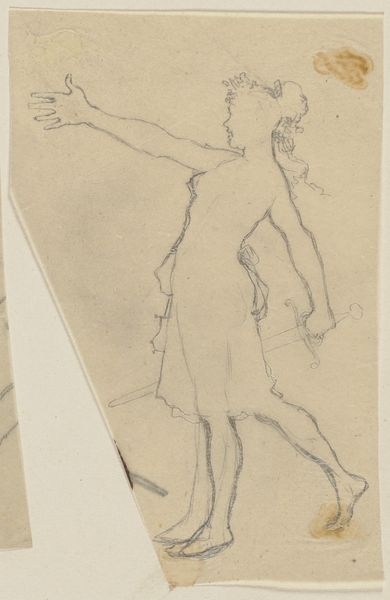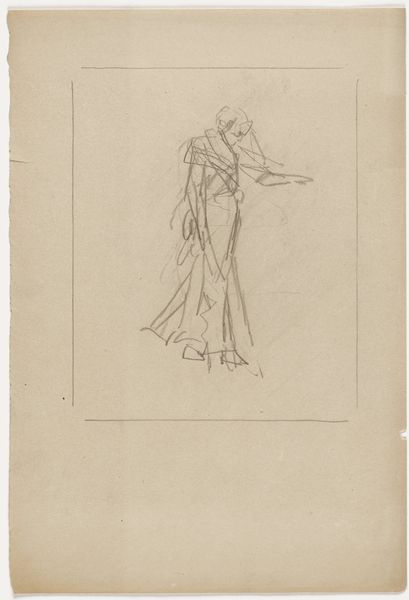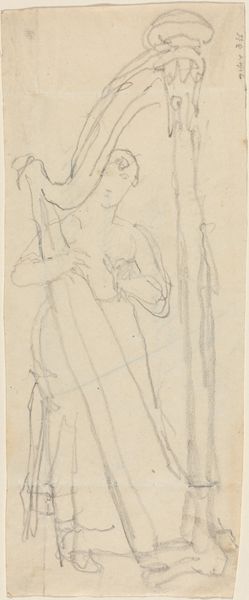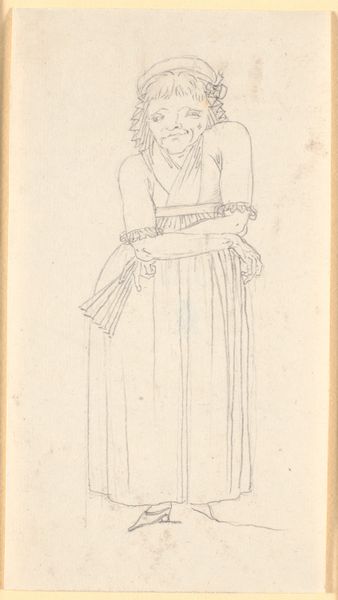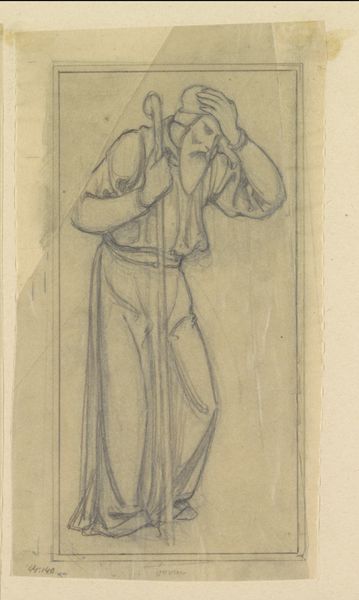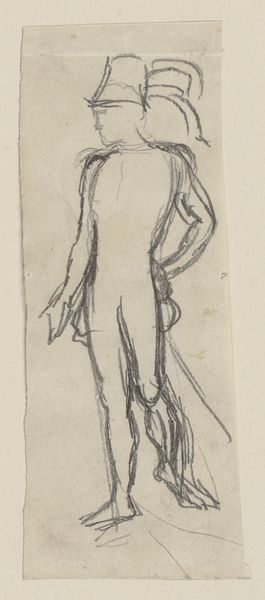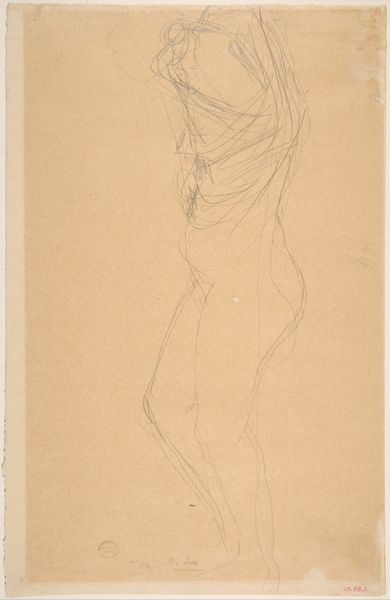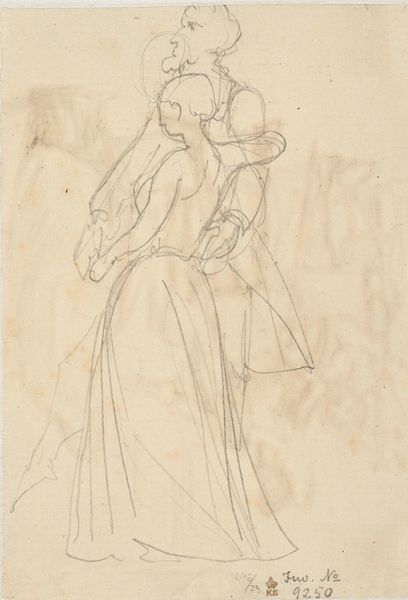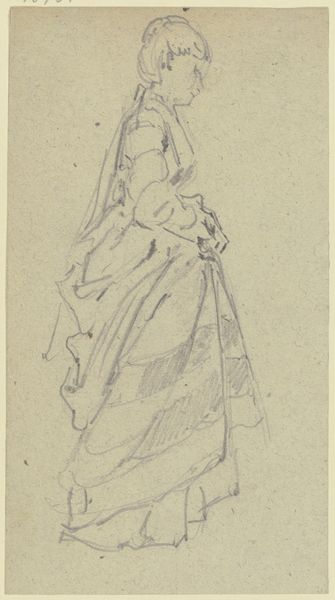
Spadserende herre, set halvt fra ryggen, gående mod venstre 1777 - 1779
0:00
0:00
Dimensions: 145 mm (height) x 91 mm (width) (bladmaal)
Editor: We’re looking at “Spadserende herre, set halvt fra ryggen, g\u00e5ende mod venstre,” or “A Walking Gentleman, Seen Half from the Back, Walking to the Left," a pencil drawing by Jens Juel, made sometime between 1777 and 1779. There’s a certain understated elegance in the subject, the confident air. What strikes you most about it? Curator: I am immediately drawn to the man's averted gaze, hidden from us, and how that invites contemplation. The angle and detail hint at a particular psychological depth; turning away might indicate reflection, or even detachment. Given the period, it reflects Romanticism's introspection. Editor: Introspection, definitely. I was also thinking of the power that simple lines can carry; a mood emerges almost entirely through suggestion. Curator: Precisely. Consider too that the image exists within a larger symbolic context. In an era increasingly fascinated by individuality and emotional nuance, walking—especially with such deliberate posture—becomes a symbol of self-determination. Are there traces of that in our cultural memory? How have we inherited ideas of posture, identity, and reflection from such eras? Editor: That's really thought-provoking. The gesture then carries more than just visual information; it embodies entire systems of belief. Thank you! Curator: It is wonderful to consider how symbols like that develop resonance, even across centuries. I, in turn, find myself thinking differently about seemingly straightforward portraiture and the complex emotions that portraiture transmits.
Comments
No comments
Be the first to comment and join the conversation on the ultimate creative platform.
